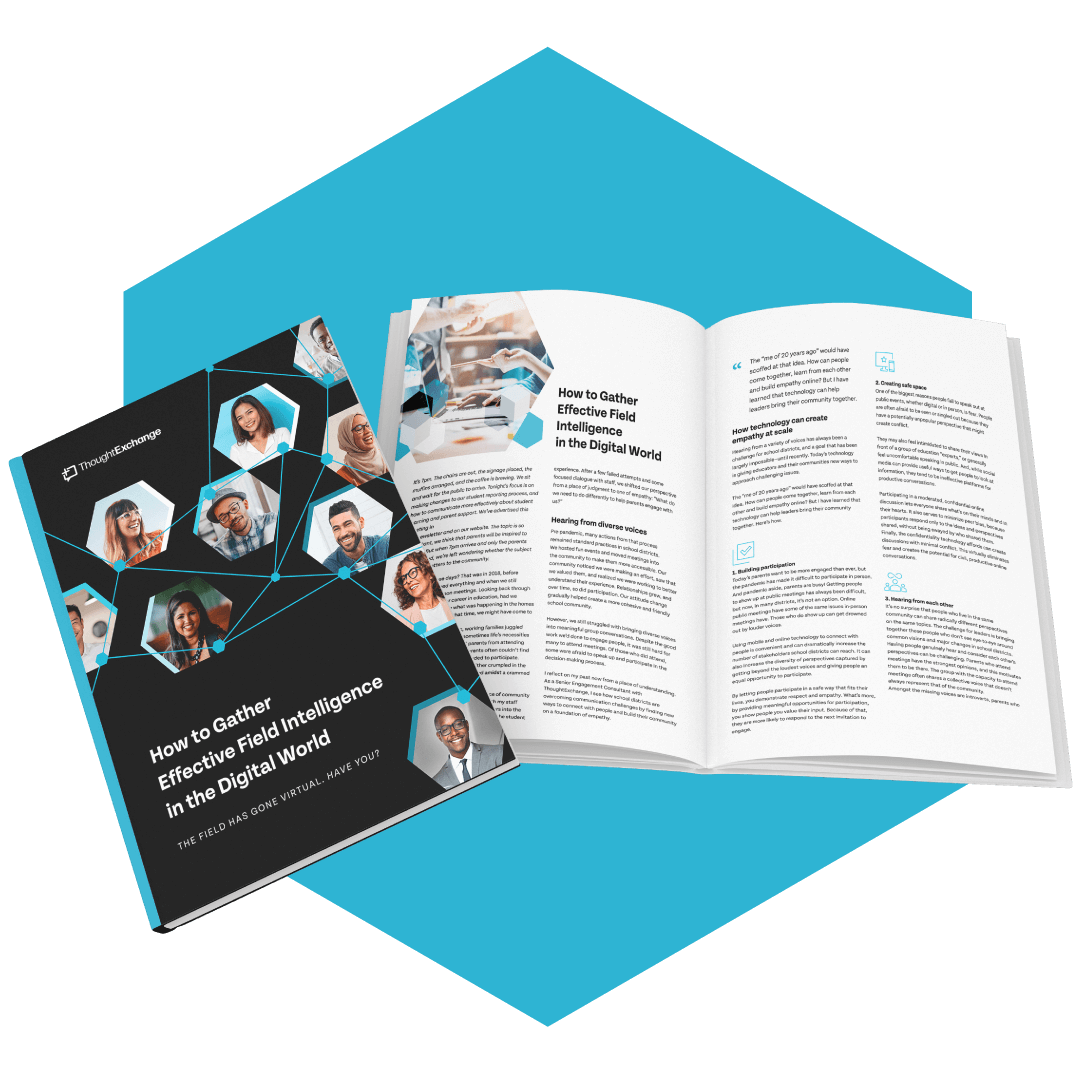August 3, 2021
Clare Morrison-Porter
What is Collective Intelligence?
5 minutes
Coming to the best decision isn’t always easy. As individuals, we’re limited by what we know and what we think we know, as well as a whole host of conscious and unconscious biases. What if there were another way—a way to combine your intelligence with that of the people around you and come to better decisions as a result.
That’s the promise of collective intelligence.
→ Download Now: How to Gather Effective Field Intelligence in the Digital World
Collective Intelligence
Collective intelligence isn’t new. Writing in the MIT Sloan Management Review, author Theodore Kinni shared an example of the concept at work more than 2,000 years ago:
“Back around 400 BC, the Greek historian Thucydides described how a ‘great many’ soldiers counted the bricks in the wall of a besieged town, and their individual totals were compared to determine the correct height for the assault ladders needed to capture it.”
This perfectly sums up the essence of collective intelligence. Each person has their own piece of intelligence and, when you add them all up, you get a more complete picture of the whole.
Fast forward to today, and smart leaders are tapping into collective intelligence and combining it with technology to help solve business challenges or societal issues. Now is the moment to join them. This article looks at what to consider for the best results from a collective intelligence initiative and the tools you need to support the endeavor.
The Advantages of Collective Intelligence
Think of collective intelligence as more than the sum of its parts. When people come together to collaborate on problem-solving, they form a level of intelligence that just isn’t possible at the individual level. These are just three of the advantages of using collective intelligence:
Commercial Success
Thomas Malone, Founding Director of the MIT Center for Collective Intelligence, writes that it is the “collective intelligence of people that helped forge civilizations, form governments, and build successful organizations.”
Whether your business is embarking on a culture change initiative or looking for a new strategic direction, collective intelligence enables you to listen and learn from disparate voices that can help validate, change, and strengthen your ideas to drive more commercial success.
Innovation
By including more voices in the decision-making process, you’re more likely to generate new and innovative ideas. Open-source software is an example of this in action, with developers working independently but together creating something new and creative.
This was explored by researchers at the University of Tennessee. They found that “developers spend their time attempting to achieve their own goals, while their contributions collect and emerge as a related collection of useful functionality that can compete with peripheral software.”
Any organization can recreate this process by pooling together the collective intelligence of employees to work through a complex challenge.

Wellbeing
Collective intelligence’s impact on employees shouldn’t be underestimated. While we’ve discussed the benefits to business, soliciting your people’s opinions will help them feel listened to, and they’ll know their contributions are valued.
When asked about why organizations need collective intelligence, ThoughtExchange’s CEO, Dave MacLeod, answered: “Fundamentally, if you want to optimize your business and show people you respect them, ask them for their opinion on things because they probably have great ideas you should listen to.”
Collective intelligence helps to create organizational trust, access diversity of thought, and ultimately respects the basic human right to be heard.
Collective Intelligence in the Workplace
Nesta, a global innovation foundation, has created a playbook for running a collective intelligence project. Use these four principles to get your initiative off to a strong start:
- Increase the diversity of the people you involve in the process. McKinsey research has shown that the most diverse organizations outperform the least diverse. Apply this winning strategy to your collective intelligence project by including a wide variety of opinions and perspectives.
- Provide ways for people to contribute freely and independently. The key is to create psychological safety and avoid the phenomenon of groupthink. This is when a group, in an effort to reach consensus, is heavily dominated by the loudest people and so (often) makes poor decisions. It’s important that participation isn’t dependent on location, or position in a hierarchy. Using technology is an effective way to level the playing field.
- Introduce data to unlock new insights. Providing additional stimuli and more context can get people thinking in new ways. Depending on the project, you could share internal data sets or ones that are publicly available.
Be citizen-centric. The purpose of collective intelligence is for empowerment, not extraction. Make sure people understand how the data they provide will be used and—wherever possible—solve problems people want to be solved. It’s a surefire way to get the participation and engagement you need for collective intelligence to succeed.

How Technology can Facilitate Collective Intelligence
Technologies like surveys and polls are often touted as ways to facilitate collective intelligence in the workplace, but they are both inadequate when you need answers to time-sensitive, mission-critical questions.
ThoughtExchange provides leaders with a way to engage their entire workforce rapidly using patented anti-bias technology. An Exchange begins with an open-ended question, which participants respond to anonymously before voting on other responses. This gives leaders a comprehensive, realistic perspective on the challenge at hand—with insights that can quickly be turned into action.
Speak to us today about using ThoughtExchange to facilitate collective intelligence in your organization




